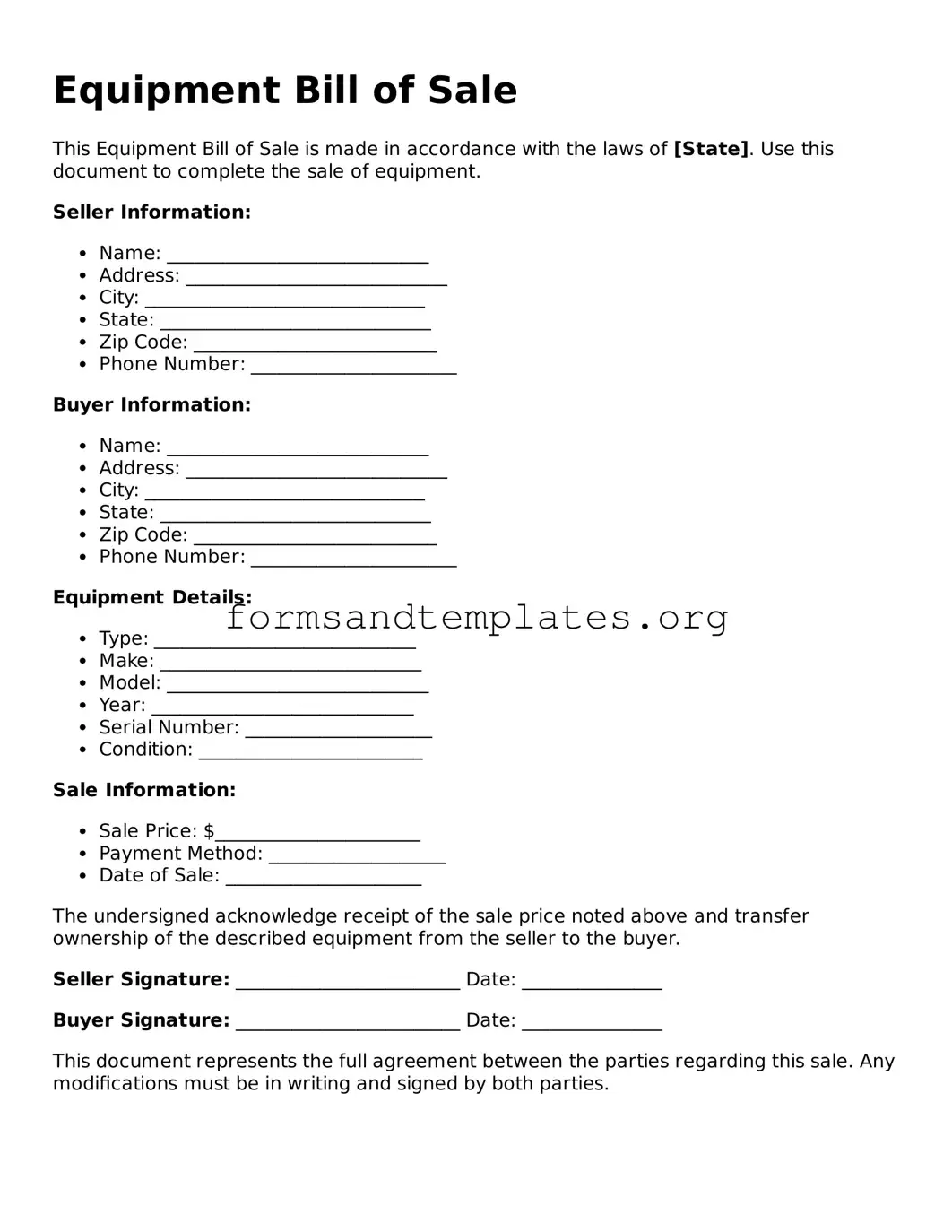What is an Equipment Bill of Sale?
An Equipment Bill of Sale is a legal document that serves as proof of the transfer of ownership for equipment from a seller to a buyer. It outlines the details of the transaction, including the equipment's description, purchase price, and the parties involved. This document is essential for both parties to ensure clarity and protect their interests.
Why do I need an Equipment Bill of Sale?
This document is crucial for several reasons:
-
It provides legal evidence of the sale.
-
It helps prevent disputes by clearly stating the terms of the transaction.
-
It can be required for tax purposes or when registering the equipment.
-
It protects both the buyer and seller in case of future claims regarding ownership or condition of the equipment.
A comprehensive Equipment Bill of Sale should include the following details:
-
The names and addresses of both the buyer and seller.
-
A detailed description of the equipment, including make, model, serial number, and condition.
-
The purchase price and payment terms.
-
The date of the transaction.
-
Any warranties or guarantees provided by the seller.
-
Signatures of both parties to validate the agreement.
Is an Equipment Bill of Sale required by law?
While an Equipment Bill of Sale is not always legally required, it is highly recommended. Certain states may have specific regulations regarding the sale of equipment, especially for larger or specialized items. Always check local laws to ensure compliance.
Can I create my own Equipment Bill of Sale?
Yes, you can create your own Equipment Bill of Sale. Many templates are available online, or you can draft one from scratch. Just ensure that it includes all necessary information to protect both parties. If you're unsure, consulting a legal professional can provide peace of mind.
What should I do after completing the Equipment Bill of Sale?
After completing the Equipment Bill of Sale, both the buyer and seller should keep a copy for their records. It’s also advisable to transfer any relevant titles or registrations if applicable. If there are warranties or service agreements, ensure those documents are also exchanged.
What if there are disputes after the sale?
If disputes arise after the sale, the Equipment Bill of Sale can serve as a key piece of evidence. It outlines the agreed terms and conditions, which can help resolve misunderstandings. Depending on the nature of the dispute, parties may need to seek mediation or legal advice to find a resolution.
